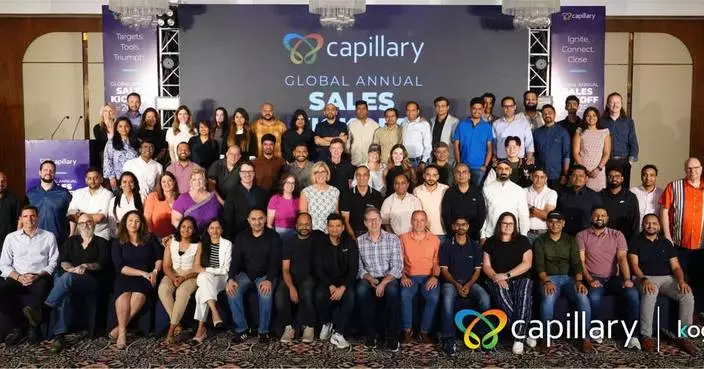PITTSBURGH (AP) — The Cleveland Guardians are still waiting for Emmanuel Clase to regain his usual form.
Clase allowed three runs in the ninth inning against Pittsburgh on Sunday for his second blown save of the season, and although he got the win when Cleveland prevailed 5-4 in 10, it was another concerning outing by the right-hander who finished third in the American League Cy Young race last year.
Clase exceeded 40 saves each of the past three seasons and posted a 0.61 ERA in 2024. This year, he's already allowed nine earned runs after yielding five all of last season.
With the Guardians leading 4-1 on Sunday, manager Stephen Vogt brought in Clase. It was his third straight day coming in out of the bullpen, although he'd thrown only 15 pitches combined Friday and Saturday.
A walk and a pair of doubles made it 4-3, then one out later, Ke'Bryan Hayes tied it with an RBI single. With two on, Clase finally got out of the inning thanks to a double play.
"I haven’t watched the replays, but any time they’re finding barrels, it’s just in the middle,” Vogt told MLB.com. “The walk, kind of bad counts. But the ball is just in the middle of the plate right now.”
It was the first time Clase allowed three earned runs in an outing since Aug. 12, 2023 against Tampa Bay.
After Cleveland scored in the top of the 10th to take the lead, Joey Cantillo took the mound and threw a scoreless inning for the first save of his career — in the majors or the minors.
Clase has 162 big league saves. But right now he also has a 7.84 ERA in 2025, and that's turned his appearances into more of an adventure than Cleveland is used to.
AP MLB: https://apnews.com/hub/mlb

Pittsburgh Pirates' Tommy Pham (28) celebrates with Enmanuel Valdez after both scored on a double by Adam Frazier off Cleveland Guardians pitcher Emmanuel Clase during the ninth inning of a baseball game in Pittsburgh, Sunday, April 20, 2025. (AP Photo/Gene J. Puskar)
MELBOURNE, Australia--(BUSINESS WIRE)--May 14, 2025--
Compumedics Limited (ASX: CMP), a world leading supplier of innovative medical technology for patient monitoring, has in collaboration with Beijing Fistar and TJNU performed recordings of both adults and children. The site at TJNU is equipped with an Orion LifeSpan™ MEG.
This press release features multimedia. View the full release here: https://www.businesswire.com/news/home/20250514323453/en/
‘Most advanced MEG capability anywhere in the world’
Professor Xuejun Bai is Vice President of TJNU, Head of the MEG Laboratory, Director of the Brain Functional Imaging Centre and former Director of the Chinese Psychological Society. He has published more than 300 scientific papers and has been awarded ten patents. Prof. Bai commented:
“ The Orion LifeSpan MEG recently installed by Compumedics at TJNU has been a revolution in our ability to study mental processes of both children and adults, or even the two simultaneously. The system has already proven itself to be extremely sensitive, accurate and reliable. My team have been hard at work doing MEG measurements, analyzing the resulting data and uncovering new neuroscientific findings. I can say without reservation that the Orion LifeSpan has given TJNU the most advanced MEG capability anywhere in the world.”
Ability to Accurately Scan Both Children and Adults
MEG is a functional neuroimaging technique for mapping brain activity. It uses highly sensitive detectors to record the naturally occurring magnetic fields produced by electrical current flows within the brain. Because magnetic fields drop off very rapidly with distance, the sensors should be as close as possible to the sources of the brain signals. A child’s small head in an adult size helmet results in sensors far from the brain, leading to small signals. A dedicated smaller helmet yields clearer and more accurate data. More precise data always leads to better research understanding and improved patient outcomes.
World’s First Recordings
After installation of the Orion LifeSpan™ MEG at TJNU, a series of measurements were undertaken to demonstrate that the theoretical advantage of the system during pediatric recordings would be borne out in practice.
Founder and Executive Chairman Dr David Burton commented: “These recordings represented the first time a single MEG system had delivered high-quality scans for both children and adults. This breakthrough was at the world’s most advanced MEG lab at TJNU, which is equipped with a Compumedics Orion LifeSpan MEG system.
“Compumedics has invested nearly a decade and many millions of dollars to develop the Orion LifeSpan MEG,” he said. “The system represents a major leap in magnetoencephalography, with dual-helmet capability for pediatric and adult brain scanning, fully integrated with our gold-standard brain analytics CURRY software.
“It’s incredibly rewarding to see these efforts translating into strong initial sales, global interest and the potential for improved brain health, among both children and adults worldwide.”
A four-year-old female was presented with a series of tones and measured with both the adult and pediatric helmet. The results showed significantly stronger detection in the pediatric helmet. Localizations showed more precise determination of where the brain had been activated by the tones. The physics of magnetic field decay and the design philosophy of the Orion LifeSpan™ MEG were confirmed
For more information about this study, the Orion LifeSpan™ MEG and Compumedics, visit:https://www.compumedics.com.au/en/blog/compumedics-demonstrates-worlds-first-adult-and-pediatric-optimized-recordings-from-a-single-meg-system-2/

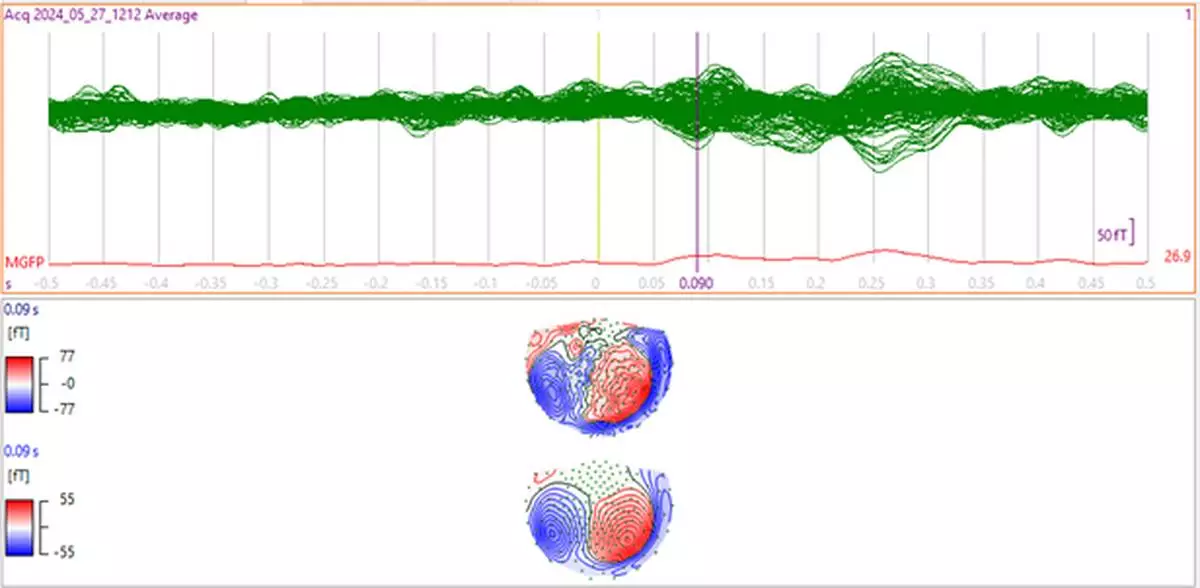
Child in Adult Helmet: The response from the same child measured in the adult MEG helmet. The traces show much lower amplitude and the map is muddied as a result of the lower signal-to-noise ratio.
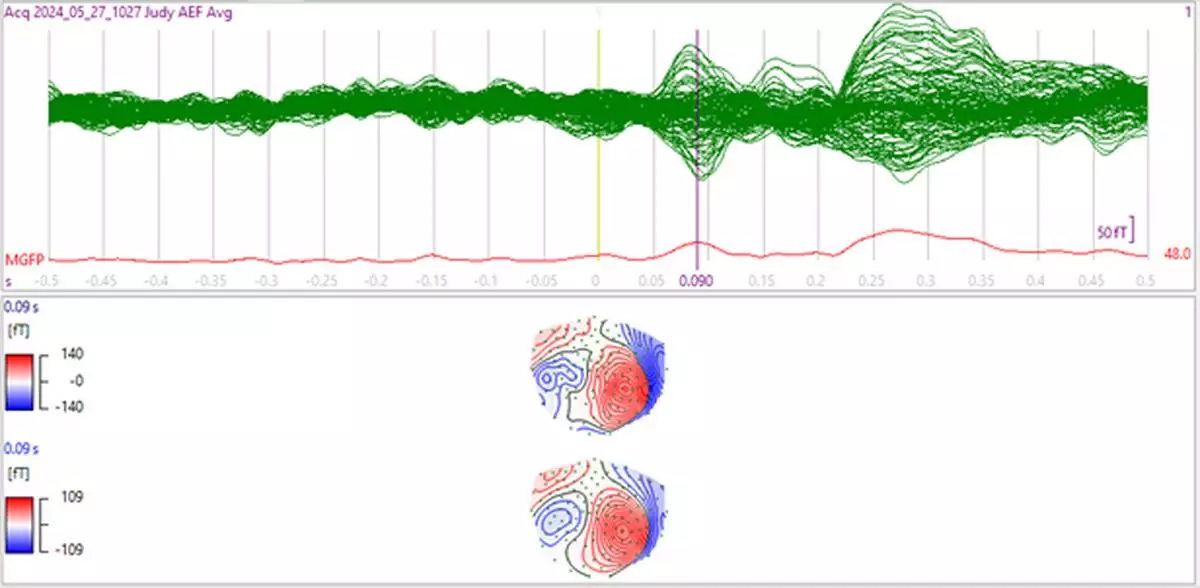
Child in Pediatric Helmet: Green traces show the signals from the MEG sensors during the child’s listening to tones. The stimulus occurs at time 0 and the clear first response peaks about 0.09 seconds later. The upper color map shows the magnetic fields across the entire head during the recording and the lower shows CURRY®’s calculation of dipolar output that would account for the measured signals.
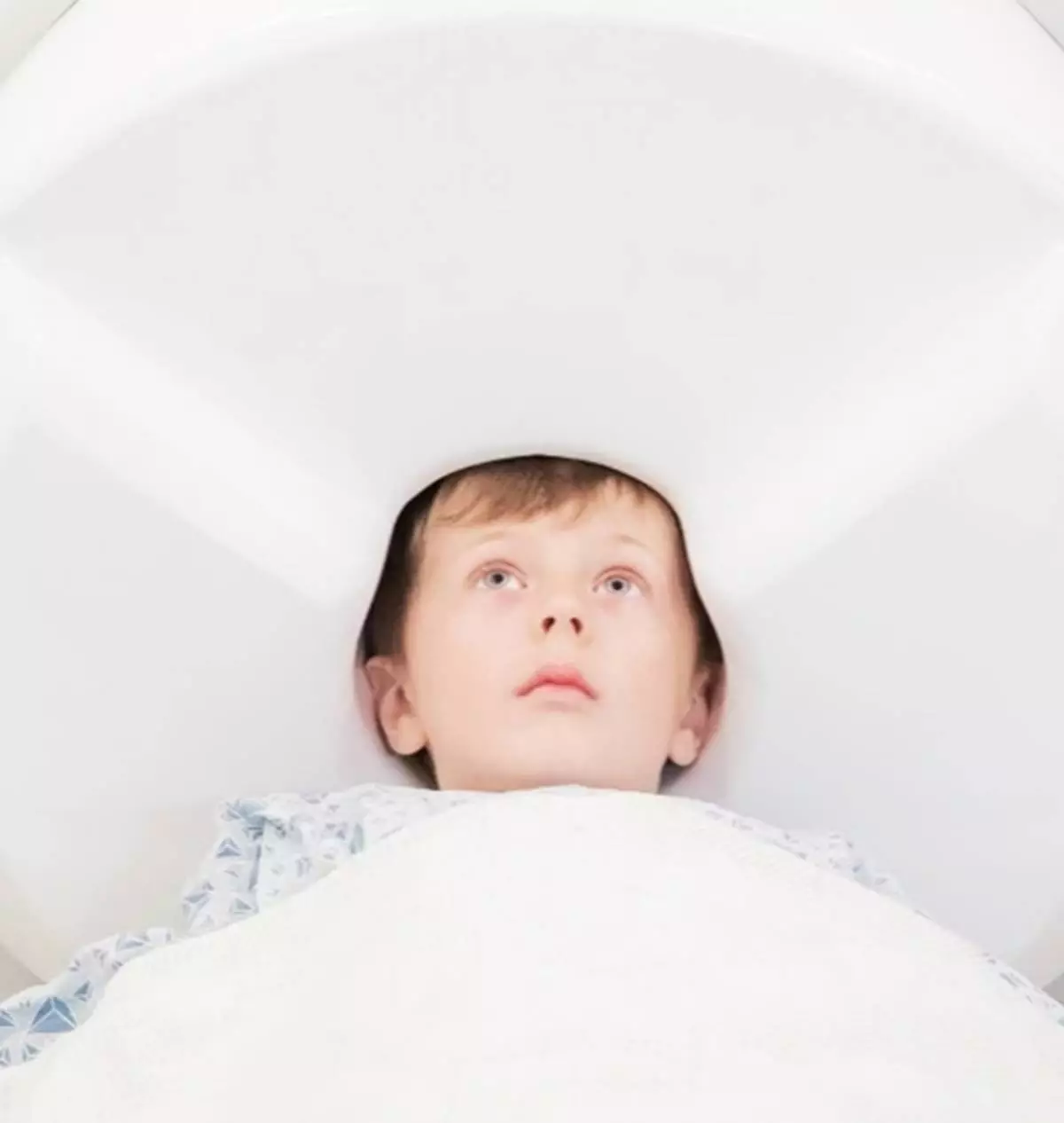
The same child in a helmet optimized for pediatric measurements.
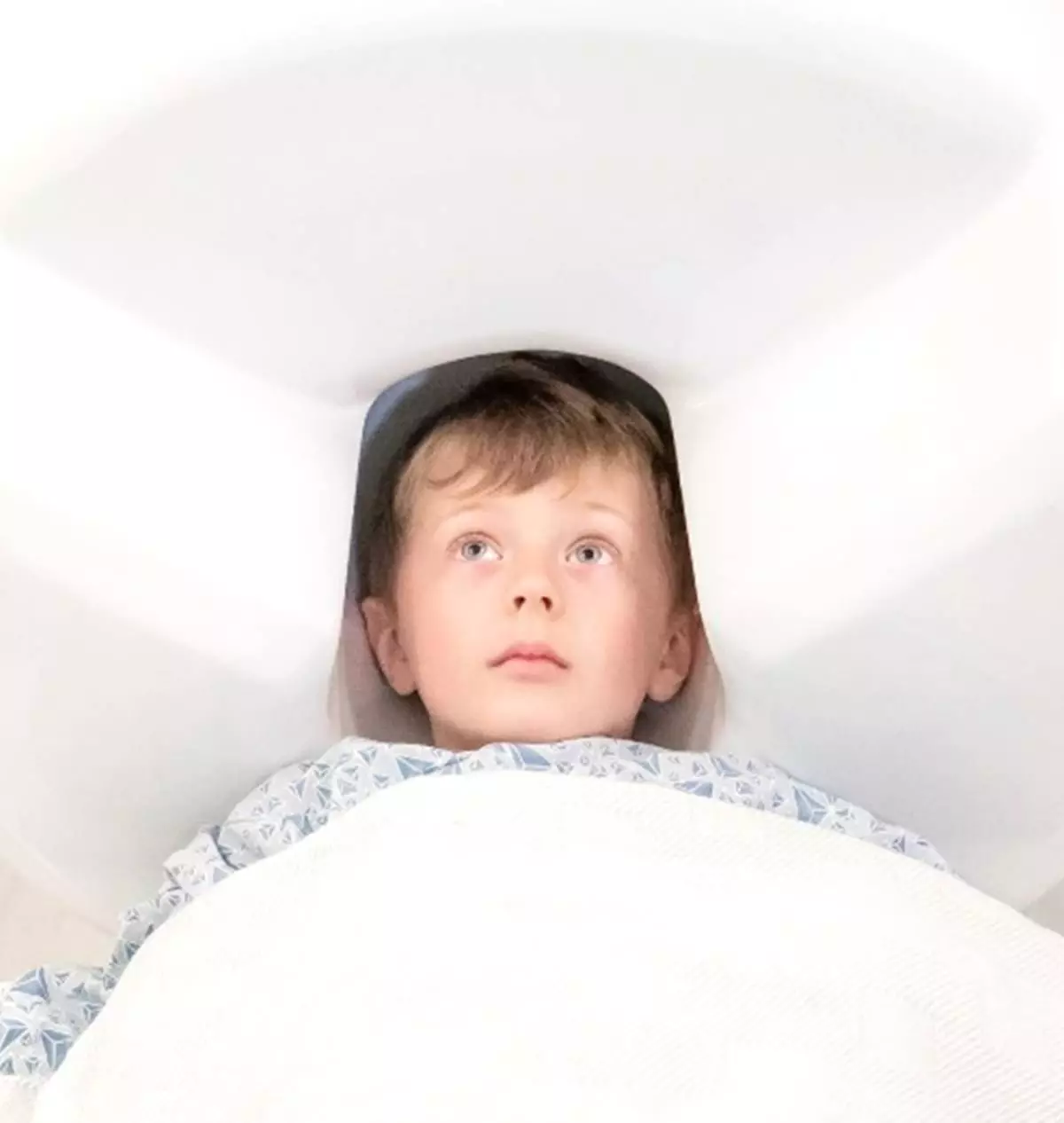
Five-year-old child in an adult sized MEG helmet.

The resulting functional brain image as shown by CURRY software.

Compumedics Orion LifeSpan MEG system during recording.














